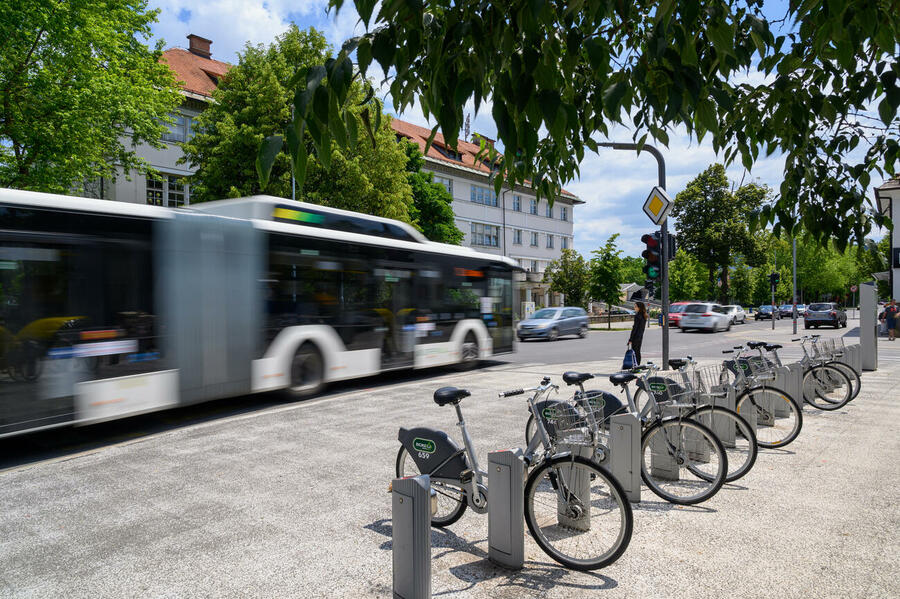Survey on travel habits in the City of Ljubljana and the Ljubljana Urban Region 2024
Ten years after the last survey of travel habits of residents of the City of Ljubljana and the Ljubljana Urban Region (2013), a new one was conducted, in which more than 6,000 people from the area of the City of Ljubljana and other municipalities of the Ljubljana Urban Region answered questions about their travel habits, ownership of a personal car, number of trips per day, purposes of trips, modes of transport used, time and duration of trips, etc.
Part of the survey was also conducted among Slovenian residents outside the City of Ljubljana and the Ljubljana Urban Region to gain a better understanding of travel habits at the national level. The development of the new Integrated Transport Strategy for the City of Ljubljana 2025–2032 is also underway, and new data on travel habits will be helpful, especially when new goals and measures for the next seven-year period are being formulated.
Public satisfaction with transport infrastructure and services

This time, we added an opinion questionnaire to the survey to gain insight into the respondents' attitudes towards different forms of mobility and related services. It turned out that among those who have experience with LPP city buses, 69.1% are very satisfied (score 5) or satisfied (score 4) with the quality of these services (and 8.4% are very dissatisfied (score 1) or dissatisfied (score 2)). 83.5% of those who have experience with the BicikeLJ bike rental system are (very) satisfied with it (3% (very) dissatisfied); among those who have cycled around Ljubljana, 69.8% are (very) satisfied with the quality of the conditions for this activity (8.9% (very) dissatisfied). Overall, 85.8% of those who have walked around Ljubljana are (very) satisfied with the walking conditions (3.9% (very) dissatisfied).
Creating more public parking spaces is important
In the opinion poll, the measures addressing parking and pedestrian areas received the highest support in terms of importance: 76.2% of respondents rated the measure of creating more public parking spaces as important or very important, and 74% of respondents rated the measure of expanding pedestrian areas as important or very important. The least importance was attributed by respondents to the establishment of additional infrastructure and services for scooters (19.8% answered that the measure was important or very important).
Close to the goals of the Integrated Transport Strategy 2017-2027
The results of the survey serve as a statistical basis for introducing new measures in the field of traffic and mobility regulation and for monitoring their success and the measures introduced so far. The preparation of the new Integrated Transport Strategy of the City of Ljubljana 2025–2032 is also underway, and new data on travel habits will be helpful, especially when new goals and measures for the next seven-year period are being formulated. In the current Integrated Transport Strategy (2017–2027), we set a goal that by 2027 two two-thirds of journeys would be made in a sustainable way and one-third by car, the aim here is to power them with environmentally friendly fuel and utilise them as much possible.
Based on the survey, we have established that we are close to this goal in the area of the City of Ljubljana, as the data shows that 61.7% of internal trips are made sustainably. Despite the higher number of trips and cars, we have achieved, through numerous measures to promote sustainable mobility, that more people move around the city on foot and by bicycle than in 2013. This was certainly supported by projects such as improving infrastructure and construction giving priority to pedestrians, cyclists and public transport users, expanding pedestrian areas, the BicikeLJ and Nomago bicycle rental systems (the number of rentals of which is constantly growing), and the greening and revitalization of public spaces by restricting motorized traffic.


